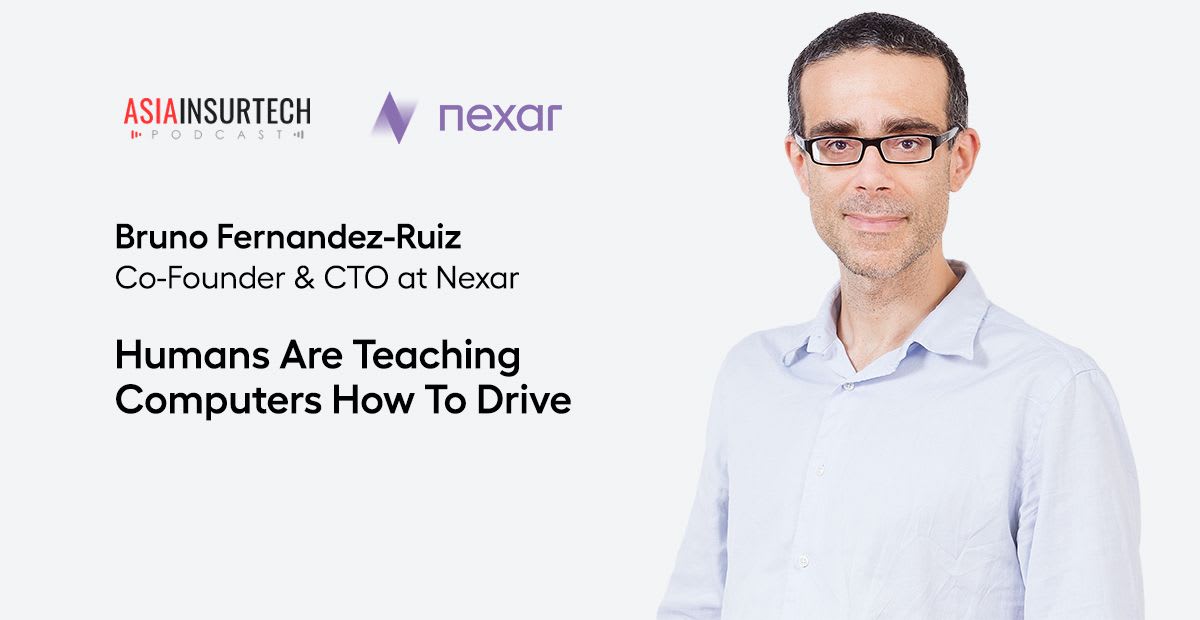AI is Transforming Road Safety to Create a Better Future for Safer Driving - Here’s How

I recently had the pleasure of chatting with Michael Waitze on the Asia Insurtech Podcast about Nexar and its role in revolutionizing road safety through ground-breaking technology. The podcast episode unpacks Nexar’s goals as a leading AI vision company, and our efforts to pave the way for a safer, more efficient driving experience.
I’d like to share some key inputs we discussed in the interview.
Empowering drivers to make better decisions – based on real-time data
Nexar’s connected vehicles network and vision-based AI offers the ability to see everything that cars can see, in real-time, with an ultimate goal to create a better future for safer driving. We want people on the road to be better informed about their surroundings, including possible dangers.
This way the person driving next to you can share what they see, and vice versa. A child running behind a truck, for example, may be beyond most drivers’ line of sight and go undetected by a camera. When a driver makes such a discovery, however, they can alert others to the situation, and save a life. People become empowered to make informed driving decisions based on real-time road conditions.
And it’s more than just real-time data. These dash cams also provide specific information about how people are driving, and details on the road itself (lane closures, construction work zones running late, signs, etc.). We are essentially crawling the physical space with hundreds of thousands of dash cams. These dash cams are really understanding the world and how people drive in it.
It’s not just about being fast. It’s about being predictable - with optimal accuracy
Think about it like web search and Twitter, but for the physical world. The physical world carries way more information than the web. If you imagine all the information nature has contained in just a little grain of sand on the beach, you can begin to understand how difficult it is to accurately analyze the world around us.
What makes web search interesting is not that someone analyzes pages and attaches the relevant page labels and keywords. This is how web browsing began with AOL and Yahoo back in the 90s, but Google’s web search killed that. Humans created signals (page links, clicks, dwell time, bounce backs, etc.) that helped search understand how people were actually searching and consuming content. Likewise, while driving, our body displays signals such as pupil dilation or increased heart rate when we accelerate, steer, hard break, or crash. All these signals are how you can learn to drive at scale, like Google, and not like AOL. Human beings should therefore be teaching computers how to drive.
There are of course infinite corner cases that need to be taken into account when striving for accuracy. For example, the straightforward nature of a highway is far more predictable than that of a residential area: where someone may be riding their bicycle, or an animal walks across the road. People instinctively know what to do in these situations and computers, of course, will need to learn this through human behavior.
The abundance of data is immensely useful and important for insurance companies
Road deaths are devastating for the families involved and cost the economy $2m per road casualty. When it comes to car crashes, the abundance of data captured by Nexar’s dash cams facilitates a more specific analysis than could have ever been possible before.
With Nexar, the details of a crash are no longer simply determined by memory or your or my opinion as “victims”, but by concrete evidence. Our dash cams provide facts that not only prove what happened visually but from a forces and acceleration perspective too. For example, a full reconstruction can determine whether or not a driver tried to brake, why they did so, what they were looking at, and if they were paying attention. All of this is vital information, not only to understand what happened but to explain it in a way that computers can understand and learn from. From an insurance perspective, this millisecond-by-millisecond collision reconstruction makes the claims process easier, and can potentially lead to less fraud, increase response time and customer satisfaction, and why not, employee happiness at the insurance carrier By default it is the person hitting from the back who is deemed at fault for causing a crash. Nexar can prove otherwise by providing context.
As we move into an area of autonomy -- with autonomous vehicles and semi-autonomous vehicles - we will see a growth in the complexity of the insurance models and attribution of fault, which will require data exchange and transparency between key players, just the same way the aviation industry evolved under the helm of the FAA. Transparency and standards for data will be crucial to ensure that we’re all speaking the same language.
Our common goal is to reach Vision Zero: A collision-free world.

